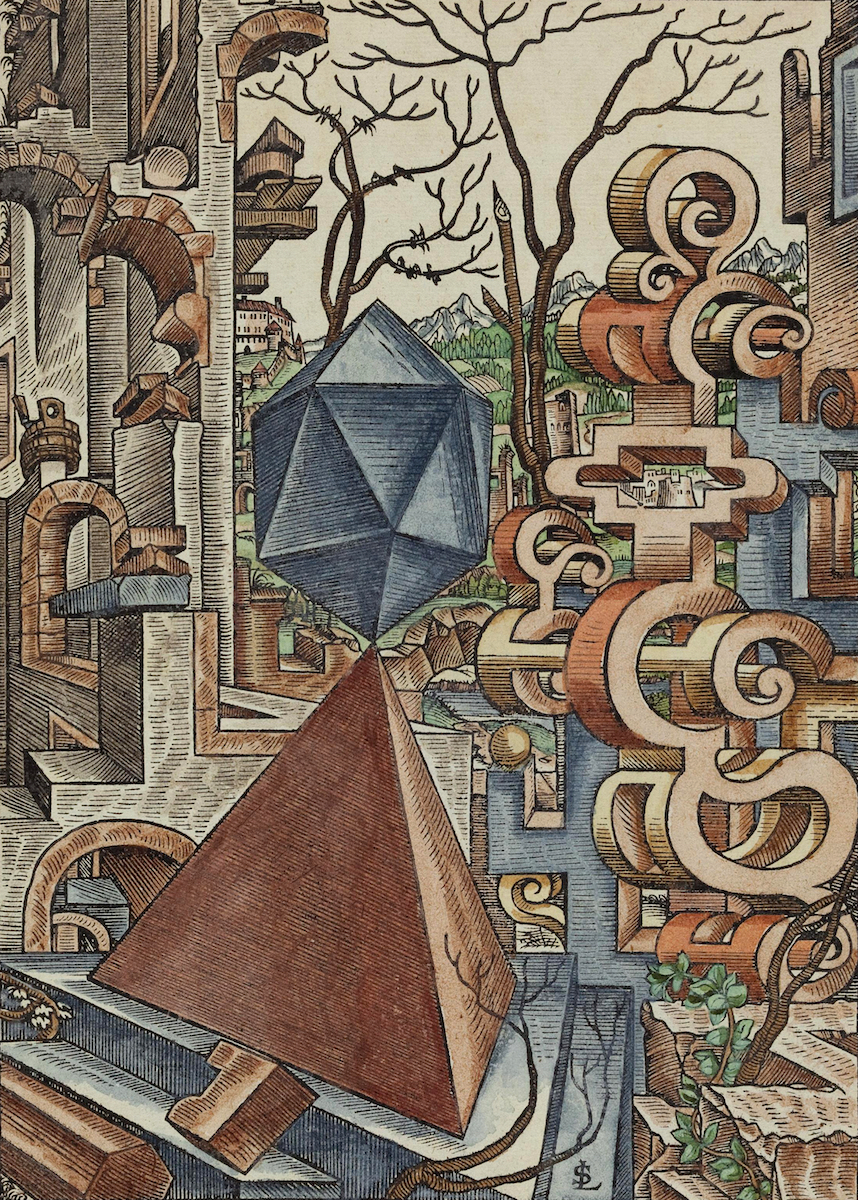
Geometric Landscape by Lorenz Stoer (1567)
Instructor’s Note
In WRT 118: The Art of the Steal, we will explore the remix as a tool for social critique and cultural transformation. Work will combines formal academic essays with digital multimedia projects to help cultivate a broader sense of contemporary composition and critical thinking.
In the first assignment, “An Original Plagiarism,” we will discuss questions about authorship, fair use, and plagiarism. Students are tasked with the challenge of composing an “original” work created entirely out of materials they did not author, a module based on the practices of Joseph Harris. The project is accompanied by a citation key of novel design. The objectives of this assignment are to nuance our understanding of both authorship and plagiarism as well as develop better citation practices.
We will then carry this foundation into the world of formal academic writing. In the “Case Study” assignment, students use the theoretical frameworks of Walter Benjamin and Susan Sontag to close read and analyze the political and/or formal implications of a cultural object (film, literature, etc.). We refine this practice in the “Critical Updates” assignment, another formal essay, by adding a more substantial research component. Students employ a critical lens of their own design to once again assess the social implications of a cultural object. Both formal essays ask students to connect their arguments to the larger course theme.
For the final project, “An Original Remix,” students create digital multimedia projects that synthesize the ideas of critique and composition explored in the modules above. Students work in a medium of their own choosing (including video, dance, and collage), responding to works of art in which their individual experience is largely undervalued, misrepresented, or absent and remixing it to better reflect their own values.
The end result is that students complete the course with a nuanced and robust understanding of authorship, attribution, composition, analysis, and critique. Ultimately, this sequence of assignments is designed to help students better navigate the complexities of not only the college classroom, but the greater social world we participate in.
-Jonathan Ruseski